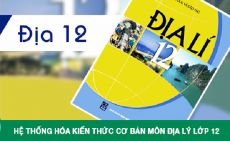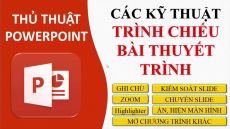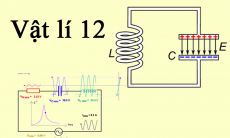Đề thi giữa HK2 môn Tiếng Anh 11 năm 2021
Trường THPT Võ Trường Toản
-
Mark the letter A, B, C, or D to indicate the word that differs from the other three in the position of primary stress in each of the following questions
Câu 1:
Choose the word that differs from the other three in the position of primary stress: organiser, comfortable, technology, populated.
A. organiser
B. comfortable
C. technology
D. populated
-
Câu 2:
Choose the word that differs from the other three in the position of primary stress: presentation, pessimistic, residential, innovative.
A. presentation
B. pessimistic
C. residential
D. innovative
-
Câu 3:
Choose the word that differs from the other three in the position of primary stress: renewable, sustainable, insfrastructure, environment.
A. renewable
B. sustainable
C. insfrastructure
D. environment
-
Câu 4:
Choose the word that differs from the other three in the position of primary stress: familiar, generate, assignment, pollutant.
A. familiar
B. generate
C. assignment
D. pollutant
-
Câu 5:
Choose the word that differs from the other three in the position of primary stress: overcrowded, inhabitant, geography, convenient.
A. overcrowded
B. inhabitant
C. geography
D. convenient
-
Mark the letter A, B, C, or D to indicate the word(s) CLOSEST in meaning to the underlined word(s) in each of the following questions
Câu 6:
Choose the word(s) CLOSEST in meaning to the underlined word(s): Today Islamabad is a thriving city of about 1 million people. It offers a healthy climate, a pollution-free atmosphere, plenty of water, and many green spaces.
A. healthy
B. prosperous
C. modern
D. green
-
Câu 7:
Choose the word(s) CLOSEST in meaning to the underlined word(s): Scientists hope that this new drug will be a major breakthrough in the fight against AIDS.
A. new cure
B. important therapy
C. sudden remedy
D. dramatic development
-
Câu 8:
Choose the word(s) CLOSEST in meaning to the underlined word(s): They design and carry out projects aiming to reduce fossil fuel consumption, find renewable fuels for public transport, and promote other clean air efforts.
A. inexhaustible
B. recyclable
C. green
D. environmentally-friendly
-
Mark the letter A, B, C, or D to indicate the word(s) OPPOSITE in meaning to the underlined word(s) in each of the following questions
Câu 9:
Choose the word(s) OPPOSITE in meaning to the underlined word(s): If I take the pessimistic viewpoint, Tokyo won't be a safe place to live in.
A. negative
B. optimistic
C. optical
D. neutral
-
Câu 10:
Choose the word(s) OPPOSITE in meaning to the underlined word(s): To reduce carbon emissions into the atmosphere, ways to limit the use of private cars must be found.
A. public
B. personal
C. common
D. shared
-
Mark the letter A, B, C, or D to indicate the correct response to each of the following exchanges
Câu 11:
“What if I quit more than 3 sessions?”
– “____”
A. You won't take the final exam.
B. You wouldn't take the final exam.
C. You wouldn't be able to take the final exam.
D. You can't take the final exam.
-
Câu 12:
“____” – “Yes, I love it here. Everything I want is only five minutes away.”
A. It's convenient to live here, isn't it?
B. It's comfortable to live here, isn't it?
C. It's inconvenient to live here, isn't it?
D. It's uncomfortable to live here, isn't it?
-
Câu 13:
“City dwellers are always so busy, aren't they?" – "____”
A. No, they aren't. Everybody's rushing about all the time.
B. Not really. Everybody's rushing about all the time.
C. I'm not sure. Everybody's rushing about all the time.
D. Yes, everybody's rushing about all the time.
-
Câu 14:
“____” – “London's so big. It took me ages to find my way round.”
A. What about London?
B. What was London?
C. How was London?
D. How about London?
-
Câu 15:
“Most cities aren't safe places to live, are they?" – "____”
A. No, I'm afraid. There are always what they call ‘no-go areas'.
B. Yes, they are. There are always what they call ‘no-go areas’.
C. Well, the opposite is true. There are always what they call ‘no-go areas’.
D. On the contrary. There are always what they call ‘no-go areas'.
-
Read the following passage and mark the letter A, B, C, or D to indicate the correct word or phrase that best fits each of the numbered blanks
MARRAKECH
Where can you go in January for almost guaranteed sunshine – without travelling for most of the day to get there? The answer is Marrakech in Morocco, a four-hour (16) ____ from Britain, where the average temperature is a pleasant 66°F.
Marrakech is a city of (17) ____ beauty, with its pink buildings and green palm trees contrasting with the snow-covered (18) ____ of the Atlas Mountains in the distance. For tourists, there's the added attraction of excellent food at reasonable prices, and high quality accommodation, such as Hotel La Momounia, (19) ____ as one of the top hotels in the world.
(20) ____ Marrakech is one of Morocco's busiest and most modern cities, the influence of the Middle Ages is still very evident. (21) ____ can admire the battlements, towers, and mosques, which were built (22) ____ centuries ago. And forget about shopping malls – for perfumes, fabrics, antiques, spices and crafts, (23) ____ the ‘souks’, open-air market places where you'll almost (24) ____ find something to take back home.
For those who want to (25) ____ sport Marrakech has plenty to offer. In addition to golf and tennis, there is also skiing on the slopes of the high Atlas Mountains, where the views of the surrounding area are quite spectacular. Alternatively, you could just relax by a heated swimming pool and dream of your next visit.
Câu 16:
(16) .............
A. travel
B. trip
C. flight
D. voyage
-
Câu 17:
(17) .............
A. big
B. great
C. large
D. high
-
Câu 18:
(18) ..............
A. peaks
B. hills
C. heads
D. surfaces
-
Câu 19:
(19) ................
A. thought
B. regarded
C. believed
D. guessed
-
Câu 20:
(20) .............
A. Because
B. However
C. Despite
D. Although
-
Câu 21:
(21) ..............
A. Spectators
B. Viewers
C. Sightseers
D. Onlookers
-
Câu 22:
(22) .................
A. several
B. plenty
C. other
D. all
-
Câu 23:
(23) .............
A. work out
B. put up with
C. head for
D. make up for
-
Câu 24:
(24) ...........
A. likely
B. certainly
C. probably
D. possibly
-
Câu 25:
(25) .................
A. do
B. exercise
C. take off
D. go in
-
Read the following passage and mark the letter A, B, C, or D to indicate the correct answer to each of the questions
LESSONS FROM CURITIBA
Urban planning deals with the physical, economic, and social development of cities. Today urban populations are increasing rapidly, and growing cities are putting enormous pressure on the environment. For this reason, the type of urban planning found in Curitiba, in southern Brazil, is more important than ever.
Curitiba is a fine example of how urban planning can work. This has not always been the case, however. At one time, Curitiba faced the same problems as many other cities all over the world, namely overcrowding, pollution, and an increased demand for services, transport, and housing. How, then, did Curitiba address these problems?
By the 1940s the population of Curitiba had grown to about 150,000 as immigrants from countries such as Japan, Syria, and Lebanon came to work in agriculture and industry. These people needed both housing and transportation. Curitiba's leaders realised that it was not sensible to deal with these problems separately. Consequently, they employed a French planner and architect, Alfred Agache, to find an overall solution.
Agache studied all aspects of the problem. He designed a scheme which gave priority to public services such as sanitation and public transport. At the same time, the scheme included centres which helped both community life and commerce to develop, and reduced traffic congestion. This was the first scheme to address several problems of growing cities at the same time. Unfortunately, some parts of his plan were not completed. The result, as described below, was that his scheme only served Curitiba for another 20 years.
By the 1960s, the population of Curitiba had grown to about 430,000 inhabitants, so the city had to rethink its needs. In order to do this, the mayor put together a team of architects and town planners led by Jaime Lerner. This team produced the Curitiba Master Plan. This consisted of taking Agache's original plan and adding wide, high-speed roads which crossed the smaller streets. Their proposals also included plans to minimise urban growth, reduce city centre traffic, and preserve the city's historic district. It is clear that the Curitiba Master Plan was one of the first attempts to integrate all aspects of city planning.
This integrated approach to urban design was maintained throughout the 1980s as Curitiba's population grew to almost one million inhabitants. Environmental facilities were added, such as a recycling programme for household waste, and parks and 'green' spaces were protected from development. However, good transportation remained central to the planning.
Good transportation still remains a priority, together with the needs for jobs. A growing population needs employment, so business parks and centres have been added to encourage new small businesses. All these changes will continue be the population of Curitiba increases, but its city planners are continually searching for solutions to the problems.
Câu 26:
What aspect of development does urban planning NOT deal with?
A. physical development
B. technical development
C. economic development.
D. social development
-
Câu 27:
How many problems are mentioned in the passage as commonly shared by many cities?
A. 2
B. 3
C. 4
D. 5
-
Câu 28:
What was the main cause of the increase in Curitiba's population Delore the 1940s?
A. immigrants from rural areas
B. workers in business park
C. immigrants from neighbouring countries
D. immigrants from Japan, Syria, and Lebanon
-
Câu 29:
In what ways was Agache’s approach different?
A. His scheme gave priority to public services.
B. His scheme included centres which helped both community life and commerce to develop.
C. His scheme reduced traffic congestion.
D. His scheme addressed several problems at the same time.
-
Câu 30:
What did the Curitiba Master Plan do?
A. added better road system
B. reduced urban growth
C. prohibit city-centre traffic
D. all of the above











